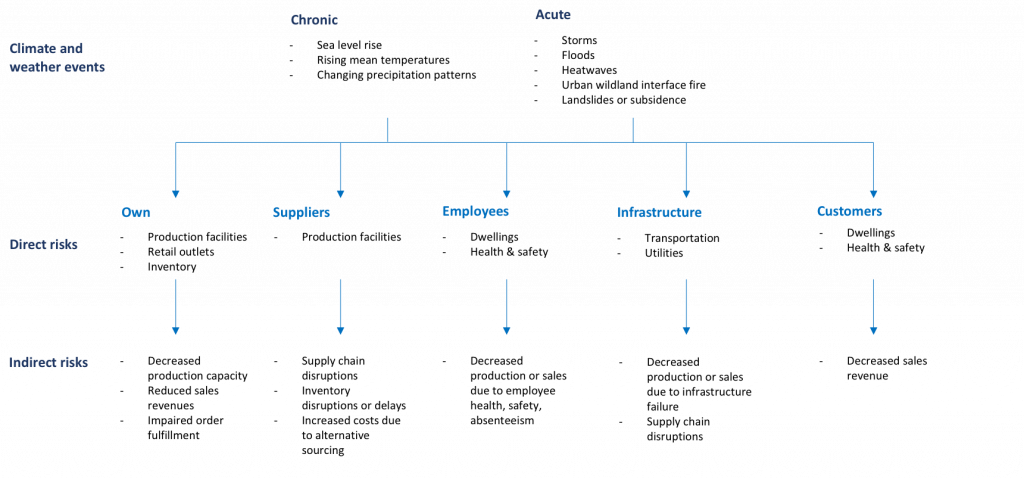Module 1: Physical Risks
Direct and Indirect Risks
Figure 1.1 provides examples of direct and indirect risks associated with climate and weather hazards.
“Figure 1.1” by Todd Thexton, Financial Impact of Climate Change, Adaptation Learning Network is licensed under CC BY 4.0.
Figure 1.1 highlights two important points:
- The geospatial distribution of physical risk exposure expands beyond the location of owned assets. As such, a comprehensive risk analysis must consider the full geographic extent of the value chain.
- Protecting one’s own property may not be sufficient to avoid the impact of climate and weather events. Community resiliency (including business’s role in promoting and contributing to it) is an important strategy for adaptation.
Like businesses, governments and public agencies are exposed to both direct and indirect risks. Public infrastructure (like roads, utilities, buildings) can be directly exposed to climate and weather events. Direct damage to public infrastructure can then result in indirect risks through the impairment of a government’s capacity to deliver essential services to its citizens (e.g., emergency services, healthcare, disaster relief, etc.).


